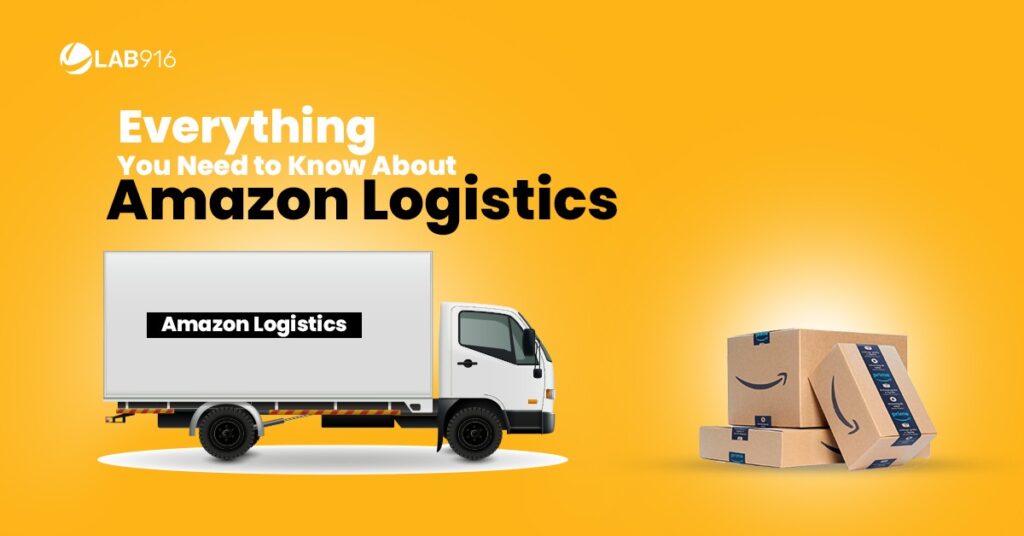Amazon logistics shipping is the proprietary delivery system that Amazon uses to retain customer satisfaction, manage a high volume of orders, and keep delivery times prompt and efficient. For third-party sellers, this system can either be a helpful relief of fulfillment-related responsibilities or an area of frustration that puts their feedback scores at risk.
What is Amazon Logistics Shipping?
In an effort to constantly evolve to meet customers’ needs, Amazon Logistics was developed to provide a 7-day, same-day, and two-hour delivery option.
This service is only available in designated service areas selected for their high order volume, and operates 7 days a week, almost every day of the year, from 8 AM to 8 PM.
Amazon contracts third-party shipping companies to make these nearly round-the-clock deliveries and has a series of requirements that they must meet in order to participate in the program.
Companies must be fully licensed as a last-mile delivery service. They must have commercial and automotive insurance, workers’ compensation, Cargo Legal Liability, trained drivers, and a minimum of 5 professional-grade cargo vehicles with at least 200 cubic feet of storage space.
Service providers accepted by Amazon are provided with a mobile app that plans and tracks the delivery route and helps handle customer service.
Impact of Amazon Logistics to Third-Party Sellers
Amazon placing trust in third-party service providers has opened up a large margin for error. These contractors are not Amazon employees and are not necessarily vetted beyond the initial application.
With this, customer experiences with Amazon logistics shipping service providers have been checkered. Late deliveries and poorly handled shipments lead to bad customer experiences, which translate to negative seller feedback. Sellers who have no control over what provider is chosen or what mistakes they make are then unfairly subject to feedback which affects their Performance Metrics and Account Health.
Negative feedback impacts a seller’s ability to win the Buy Box, which is destructive to sellers who offer a product also carried by others. However, even sellers with completely unique listings are affected by lower rankings in search results.
Despite these frustrations, however, Amazon logistics was developed for a reason and offers powerful advantages, as well. Third-party sellers have access to Amazon programs such as Lockers, Fresh, Flex, and Prime Air through the program.
Amazon logistics shipping also makes ultra-expedited deliveries as fast as two hours possible in certain regions, which rewards a seller with glowing customer feedback when a delivery is executed properly.
Working with Amazon Logistics
As a third-party seller, your best bet for reaping the rewards of Amazon Logistics without falling victim to the possible damage to your feedback score is to keep an open line of communication with your customer.
Use the buyer-seller messaging capability to your advantage. With the right sequence of personalized messages delivered at the right time, you can ward off a customer’s inclination to leave negative feedback in the event that Amazon logistics shipping makes a mistake.
Your first message should arrive as soon as a customer places an order, with your thanks and assurance that their package is in the works.
The second message should arrive just after delivery. One of the pitfalls of Amazon Logistics is that an exact delivery time is not specified, but rather an estimate. Time your email to send at the end of this estimated window.
You need to be careful here: if your email sends before the package arrives, it is simply a reminder to the customer that there has been a delay. For extra insurance, you can schedule this second email to send after 8 PM in the customer’s time zone. This is generally when Amazon Logistics deliveries are finished for the day.
In this second email, ensure that you have made yourself clearly and readily available to resolve any issues. Inform your customer of the best way (or ways!) to contact you, so that cases of missing packages or late deliveries can be resolved in the private confines of the buyer-seller messaging system, rather than the public domain of seller feedback.
Finally, cap off your email with a call to action. Request that the customer leave seller feedback regarding the customer service that they received. Customers appreciate personalized service and open communication, so provided you’ve succeeded in this area, you can expect positive feedback that will boost your metrics.
Despite its margin for error, Amazon logistics shipping is ultimately beneficial to you as a seller. With this program, Amazon is able to get customers their orders with speed unmatched by other online shopping platforms, which reflects well on you.
Plus, by implementing a proactive customer support strategy heavy on communication, you can address potential issues before they arise. Use these tips to ensure that Amazon Logistics doesn’t get in the way of your customers’ satisfaction, and enjoy the advantages of expedited delivery.


